Rhode Island's bees are dying. These scientists are trying to save them.
SOUTH KINGSTOWN – How many types of bees do you think there are in Rhode Island?
If the number you come up with is in the single digits, you’re in good company.
“When I give talks and I ask people, they usually say five, maybe 10,” said Steven Alm, the director of the Bee Lab at the University of Rhode Island.
But they’re way off.
The actual number is around 280 and counting.
Members of the lab are still documenting all the species found in Rhode Island. Over the last two summers, researchers have collected thousands of specimens from places all around the state. Many of them are still awaiting classification.
The ones that have been identified go beyond the ubiquitous honeybee. They are lesser-known species, like the neighborly miner bee, the confusing bumble bee and the blueberry cellophane bee.
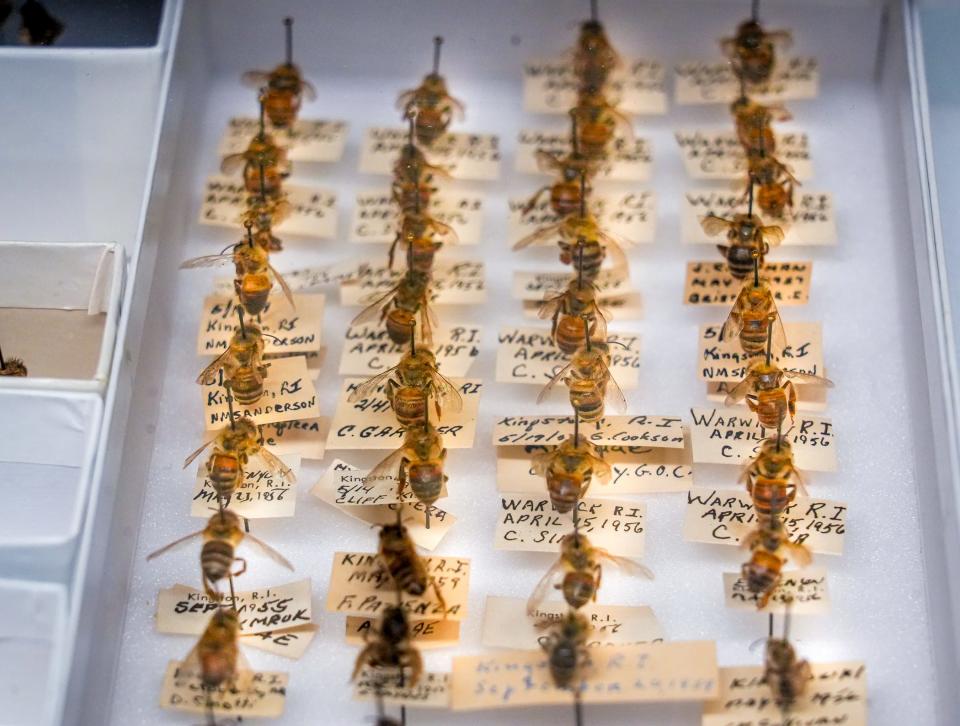
It’s the first time such an extensive survey of bee species has been conducted in Rhode Island and, with another season of work still to go, Alm doesn’t know what the total figure will end up being.
But he’s pretty sure of one thing – if a similar study had been done generations ago, it would have found even more bee varieties.
“We’re seeing decreases everywhere,” said Alm, a professor of plant sciences and entomology. “There are so many bee species, so it’s difficult to measure. But there are probably even more losses that we don’t even know about.”
Bee populations threatened by habitat loss, pesticides and climate change
The threats facing bees and other insects are numerous, from pesticides to habitat loss, parasites to pollution.
Climate change is creating new difficulties. It has shifted when plants produce pollen, creating a mismatch with the times that bees need food. It has altered floral scents, making it harder for bees to forage. Drought dries up nectar. Extreme rains restrict the hours that bees can fly.
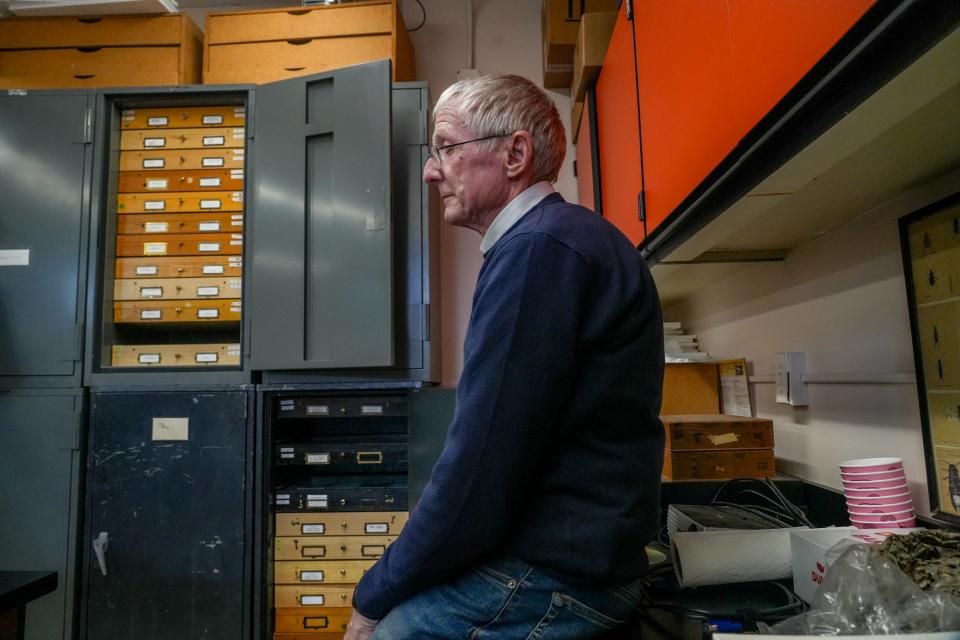
A combination of environmental factors is believed to be tied to colony collapse disorder, a phenomenon that has caused widespread losses of honeybees over the last two decades.
But while managed colonies are given treatment for pathogens or fed sugar to stave off starvation, wild bees get no such support. So perhaps it’s not so shocking that species are disappearing.
No statewide study of bees has ever been done
Alm points to the work of research associate Casey Johnson and other members of the lab who surveyed the state for bumblebees starting in 2019 and were able to find only seven of the 12 species listed in historical records.
Species like the rusty patched bumble bee and the lemon cuckoo bumble bee are believed to either be lost forever from the state or in perilously low numbers.
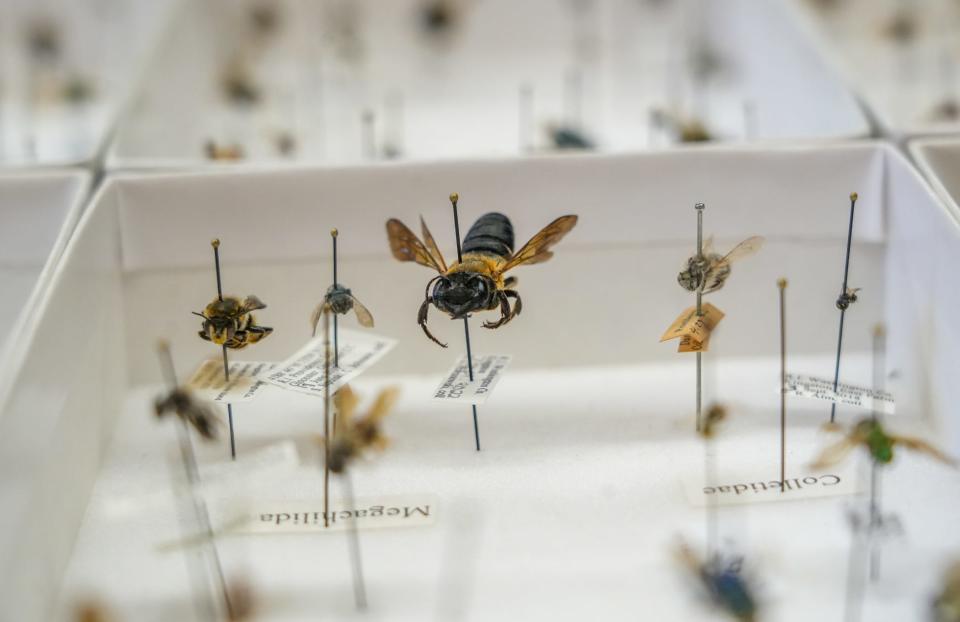
One of the challenges facing Alm and the other lab researchers in their work is that entomological records from the past are spotty.
Without a single comprehensive survey for Rhode Island, they’ve had to comb documents not only at URI but also from Yale, Harvard and other institutions for records of what bee species have been found in Rhode Island over the years.
Why was a state survey never done before?
“Because I don’t think anyone ever imagined that anything as numerous as insects would suffer this type of decline,” Alm said.
A 'charismatic group' of insects
One recent afternoon, inside the basement room that houses URI’s Insect Collection, Alm pulled out a tray full of dead bees, dozens of them pinned in place and organized by species.
Some of them fit the prototypical appearance of a bee, with their fuzzy bodies encircled by alternating stripes of yellow and black. But some looked more like flies. The bumble bees stood out by their size, but differentiating them by species seemed all but impossible.
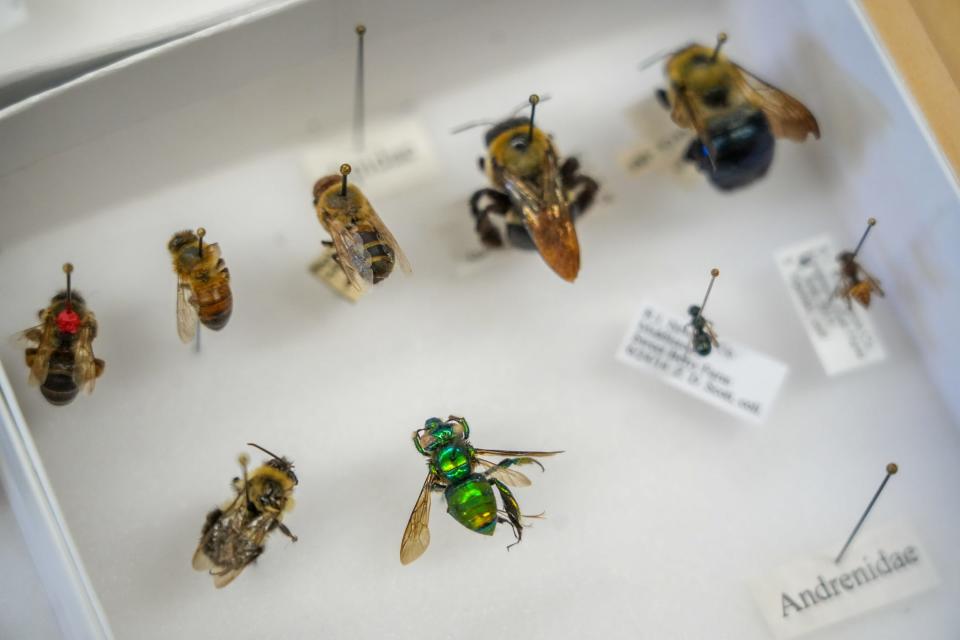
Experts, too, can have trouble with some of the less-common types, said Alm. Sometimes, he has to make precise measurements of mandibles or other body parts to make a definitive identification. With some species, it can take hours of staring into a microscope before reaching a conclusion.
That’s why having physical specimens for study is so important. The Insect Collection at URI was started in 1902 by John Barlow, a professor of zoology and vice provost of the university who was nicknamed “Buggy.” The collection has expanded over the years and includes not only insects from Rhode Island and other parts of North America but also specimens from Australia, Asia and other far-flung locales.
The cabinets hold hundreds of trays. Alm can only guess at how many insects they hold.
Alm started doing work on bees about a decade ago, primarily because of their role in the environment as pollinators. He created the Bee Lab after one of his students began a research project on the species that are needed to pollinate blueberries.
Lab member Ren Johnson, a Ph.D. student who is studying the effectiveness of human-made nesting boxes, also got interested in bees because of their importance to plants. Research assistant Emma Tondre, who is looking at the impact of pollinator-friendly plantings, says she’s always loved bees.
“They’re a charismatic group compared to other insects,” she said.
How native plantings can help bees
Alm and his team are doing more than just surveying for bees. They’re also studying ways to help ensure that Rhode Island doesn’t lose any more species.
Bees have two general needs for survival: food and nesting sites. While honeybees are known to fly up to 8 miles to forage, most other types don’t travel nearly as far. So nearby food sources are critical.
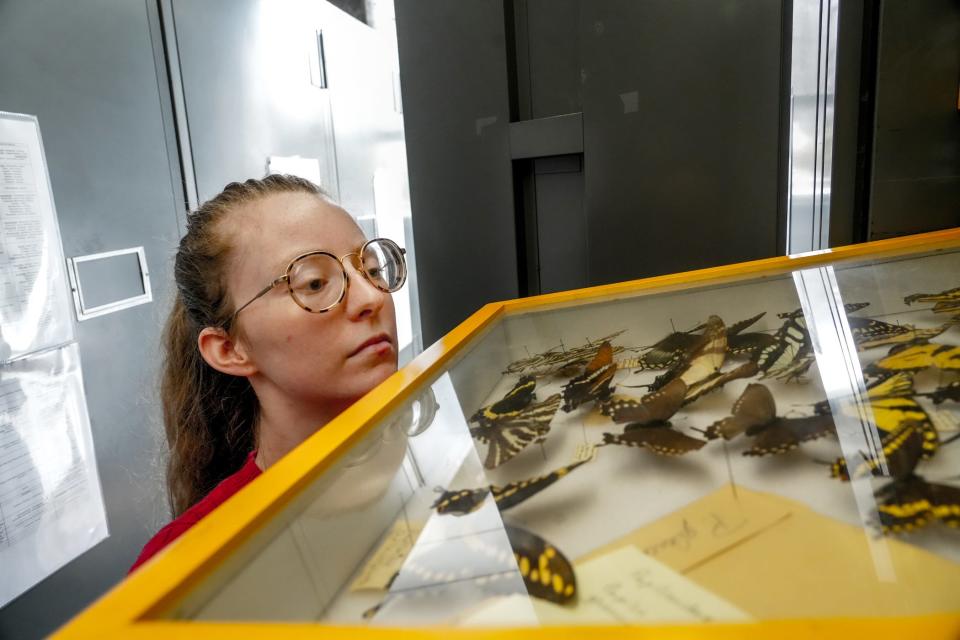
Even small patches of native flowers in home gardens can make a difference. The researchers recommend planting dense groupings of a diversity of flowers that bloom at different times – varieties like wild indigo, red clover, butterfly milkweed and New England aster.
Trees such as the Eastern redbud or the Pagoda dogwood also help by providing early-spring flowers and offering places to nest in hollows and cracks. Bare patches of ground are also good places for bees to dig burrows.
“Hundreds of bees can potentially nest in a single square meter of bare soil,” said Tondre.
That’s a reason for optimism when thinking about the potential impacts of even small backyard conservation efforts on bee populations.
“With insects, it’s much easier to make a difference,” said Johnson.
Alm says the work by the Bee Lab to catalogue Rhode Island’s bees will help support studies years from now.
“We want to get a snapshot in time that future scientists can use,” he said.
Does he think those scientists will find fewer bees if they do another statewide survey?
“I hope not,” Alm said. “That’s why we’re pushing so hard to reverse the decline.”
This article originally appeared on The Providence Journal: These URI scientists are racing to count RI's bees - and hopefully save them

